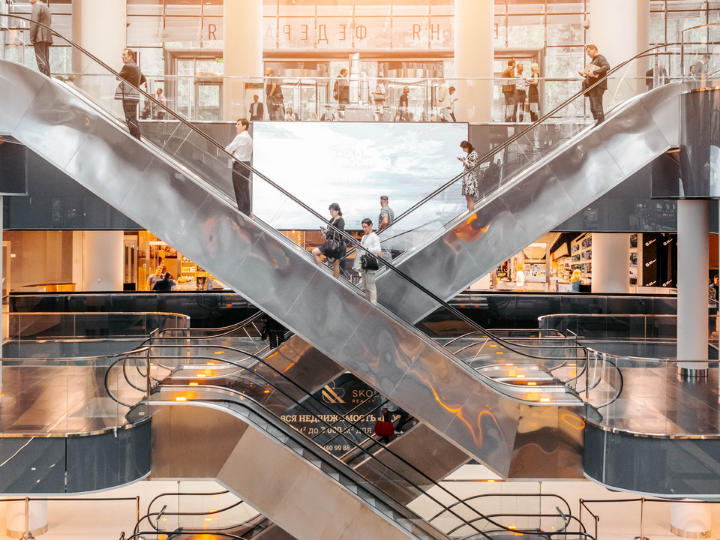by Antonis Zairis and Thanos Efthymiopoulos*
Even though the digitization of society has long since begun, its micro- trends have been dramatically affected by the impact of Covid-19 that has strengthened its presence- especially as regards: the further development of e-commerce, the adaptations to the physical stores and to the multichannel distribution systems. Although the post- pandemic period is expected to bring some stability, its total effects are not yet visible. This macroeconomic trend will play a significant role in redefining the mall business model.
More specifically, the further development of e-commerce will be one of the micro- trends with a direct impact. Although retail e-commerce sales are considered a small percentage of total retail sales in the EU, Covid-19 has had an impact on both the e-commerce penetration and the share of wallet on behalf of consumers is going to be spent -promoting their developments in a new field. Some consumers have been able to try online shopping due to the closure of physical stores, for the first time. The Shopping Mall industry is called upon to adapt- enhancing its relevance and creating solutions to confront this trend with its own e- commerce channel.
The adaptations to the physical stores are another micro- trend that are here to stay. The conventional model measurements and store presentation is pushed into forced adaptation. Retail will need to redefine physical store portfolios, especially regarding the fashion brands and supermarkets (Electronics & Electrical Trade has long since started to adapt). There will be a focus on portfolio optimization opportunities in open / larger stores in primary locations- an idea of an exhibition space (or of an anchor store), which will enable consumers to interact with the brand and further facilitate online experiences, as well as will permit the store reduction in secondary locations. This will have a direct impact on the Shopping Malls Business Model that will need to be reinvented, as the traditional fixed rent / turnover rate and the operating expense percentage will either loosen or become more important in terms of negotiating with shopkeepers, as regards the store location and type. Primary locations will add value for the retailer and will not be based on the operating cost ratio, while secondary locations will be based mainly on this ratio and will be a conventional variable for the agreements. Therefore, new conventional models of owner- shopkeeper relationship will be developed. Knowledge of business awareness will be more relevant, supported by technological innovation- such as geolocation and mobile tracking.
Retail expresses the fusion of online and offline experience in an increasingly multi- channel product distribution environment. This strategy might show that the expected reduced visits to shopping malls, due to the evolving post-pandemic reality (which would turn into the "new normal"), will enable the so-called "halo effect" to generate more sales- not only as regards the store that prompted the visit, but also purchases in other stores. Shopping malls should accept the different distribution channels as an essential element of commercial policy that, in addition to providing the required digital infrastructure, must clearly define their digital portfolio strategy.
Assuming this is the "new normal", visits will tend to be more functional and safer, so the shopping experience will be more and more in-store. However, Shopping Malls should seek technological partnerships with specialized users that will enable stores to be updated with more and more digital experiences- such as: augmented reality, fast tracking or interactive in-store / online workshops.
In terms of mobility and urbanization, they play a structural role in the future retail landscape. Taking this macroeconomic trend into account, work flexibility is more immediate as it poses new challenges to the definition and dynamics of consumer domain market researches. It is also important to underline the Mall mission relevance based on the location ecosystem and the retail mix.
In the context of the increasing importance of cities and the consequent reduction of the suburban populations (urbanization), shopping mall industry will face a relevant pressure depending on the location. Shopping Malls located in cities (and especially in primary locations) will be benefited from increased consumer traffic, while Shopping Malls located in suburbs and secondary locations will need to reinvent their strategy and retail mix, with an emphasis on sales intensification and emergency markets.
The new mobility network systems will change the model, which is "consumption areas depending on driving time" in the Shopping Mall industry, as consumers seek to integrate many aspects of the new systems into their daily lives. The urban environment where a Mall is located and the number of permanent residents / non-residents (visitors) can also introduce another relevant level of analysis. Therefore, the well-known "Location, Location, Location" becomes more critical than ever, as it should foster this multi-level integration. Shopping Centers located in cities, where mobility systems are promoted, will be benefited from a wider set of opportunities.
Flexibility work in the “new normal”, which is in line with mobility and urbanization, raises concerns about the shopping mall attractiveness and relevance. Consumers have different expectations and habits, so it is important for Shopping Malls to change their role and perception from shopping and entertainment destinations to a multi-purpose role- including a wide variety of activities that become the focal point in the customer "journey" and in mixed use urban ecosystem. In addition, this new normality enables the integration of co-working spaces in the Shopping Center, in terms of retail mix.
*Assoc. Vice President of SELPE, Assistant Professor of Business Administration University of Neapolis, Cyprus & “American Economic Association” member and Country Representative for Greece, Investment & Asset management manager of Sonae Sierra, for Southeastern Europe




 By: N. Peter Kramer
By: N. Peter Kramer
